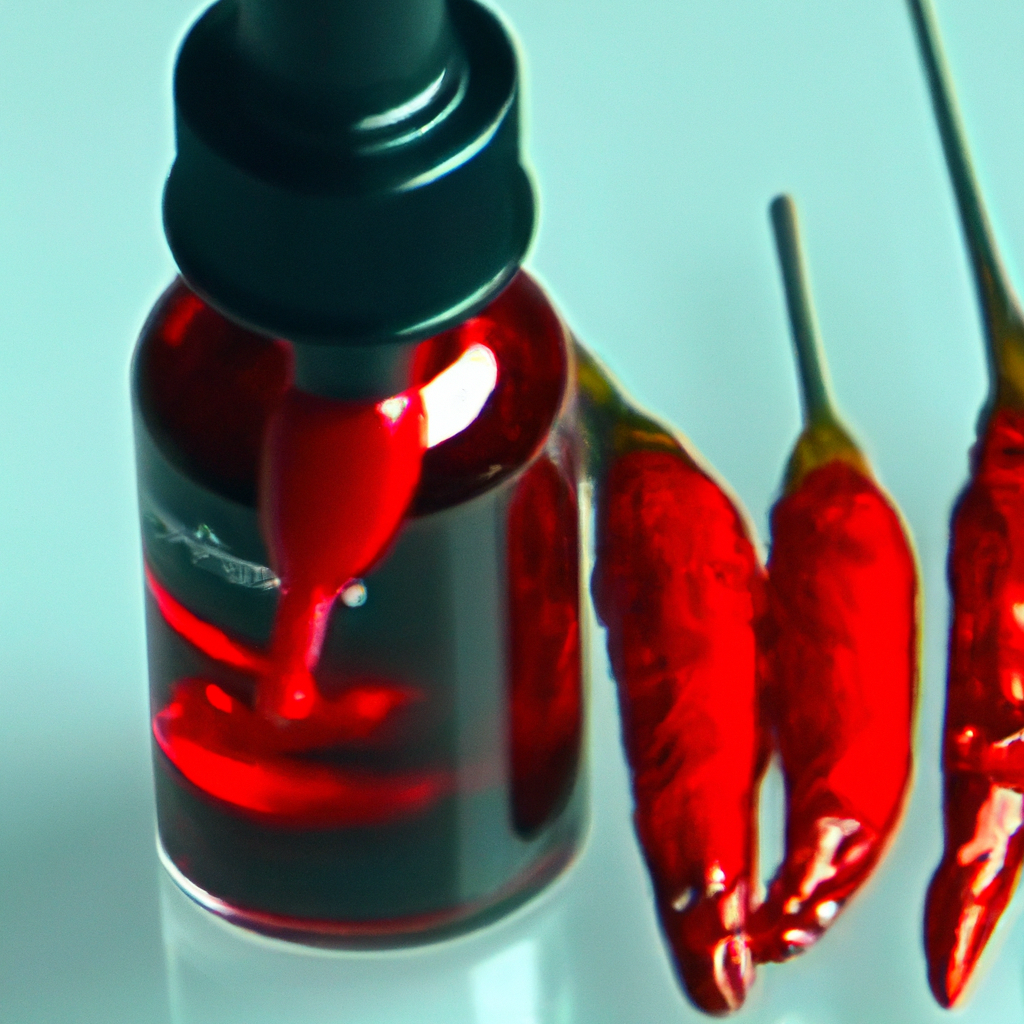-
Reading Roadmap
- High-Potency Capsaicin Topical Treatment for Diabetic Peripheral Neuropathy Pain
- Key Takeaways
- Introduction: Unveiling the Potential of Capsaicin
- The Science Behind Capsaicin
- Efficacy of Capsaicin Treatment
- Side Effects and Safety of Capsaicin Treatment
- Future Research Directions
- FAQ Section
- Conclusion: The Promising Role of Capsaicin in DPN Pain Management
- Further Analysis
High-Potency Capsaicin Topical Treatment for Diabetic Peripheral Neuropathy Pain

[youtubomatic_search]
Key Takeaways
- High-potency capsaicin patches are an effective treatment for diabetic peripheral neuropathy pain.
- Capsaicin works by depleting substance P, a neurotransmitter that transmits pain signals to the brain.
- Studies have shown that capsaicin treatment can significantly reduce pain levels in patients with diabetic peripheral neuropathy.
- While capsaicin treatment is generally safe, it can cause temporary side effects such as burning or stinging at the application site.
- More research is needed to determine the long-term effects and optimal dosage of capsaicin treatment for diabetic peripheral neuropathy pain.
Introduction: Unveiling the Potential of Capsaicin
Diabetic peripheral neuropathy (DPN) is a common complication of diabetes, affecting up to 50% of patients. It is characterized by nerve damage in the extremities, leading to symptoms such as pain, numbness, and weakness. One promising treatment for DPN pain is high-potency capsaicin, a compound found in chili peppers that has been shown to have analgesic properties.
The Science Behind Capsaicin
Capsaicin works by depleting substance P, a neurotransmitter that transmits pain signals to the brain. When applied topically, capsaicin binds to the TRPV1 receptor on nerve cells, triggering the release and subsequent depletion of substance P. This results in a reduction in pain signals sent to the brain, thereby alleviating pain.
Efficacy of Capsaicin Treatment
Several studies have demonstrated the efficacy of capsaicin treatment for DPN pain. A 2017 study published in the Journal of Pain found that high-potency capsaicin patches significantly reduced pain levels in patients with DPN compared to a placebo patch. Another study published in Pain in 2016 found that capsaicin treatment resulted in a 30% reduction in pain intensity compared to baseline.
Side Effects and Safety of Capsaicin Treatment
While capsaicin treatment is generally safe, it can cause temporary side effects such as burning or stinging at the application site. These side effects typically subside within a few days of treatment. Rarely, capsaicin treatment can cause systemic side effects such as nausea, vomiting, and diarrhea. However, these side effects are typically mild and resolve on their own.
Future Research Directions
More research is needed to determine the long-term effects and optimal dosage of capsaicin treatment for DPN pain. Future studies should also investigate the potential benefits of combining capsaicin treatment with other therapies for DPN pain.
FAQ Section
- What is capsaicin? Capsaicin is a compound found in chili peppers that has been shown to have analgesic properties.
- How does capsaicin work? Capsaicin works by depleting substance P, a neurotransmitter that transmits pain signals to the brain.
- Is capsaicin treatment effective for DPN pain? Yes, studies have shown that capsaicin treatment can significantly reduce pain levels in patients with DPN.
- Are there any side effects of capsaicin treatment? Yes, capsaicin treatment can cause temporary side effects such as burning or stinging at the application site. Rarely, it can cause systemic side effects such as nausea, vomiting, and diarrhea.
- Is more research needed on capsaicin treatment for DPN pain? Yes, more research is needed to determine the long-term effects and optimal dosage of capsaicin treatment for DPN pain.
Conclusion: The Promising Role of Capsaicin in DPN Pain Management
High-potency capsaicin patches represent a promising treatment for DPN pain. By depleting substance P, capsaicin can effectively reduce pain signals sent to the brain, thereby alleviating pain. While capsaicin treatment can cause temporary side effects, it is generally safe and well-tolerated. More research is needed to optimize capsaicin treatment for DPN pain, but the current evidence suggests that it could be a valuable addition to the therapeutic arsenal for this debilitating condition.
[youtubomatic_search]
Further Analysis
As we delve deeper into the potential of capsaicin as a treatment for DPN pain, it is clear that this natural compound holds significant promise. With further research and clinical trials, we may soon see capsaicin patches becoming a standard treatment option for those suffering from this debilitating condition. The journey of capsaicin, from a simple chili pepper to a potent pain reliever, is a testament to the power of nature and the potential of scientific research.







